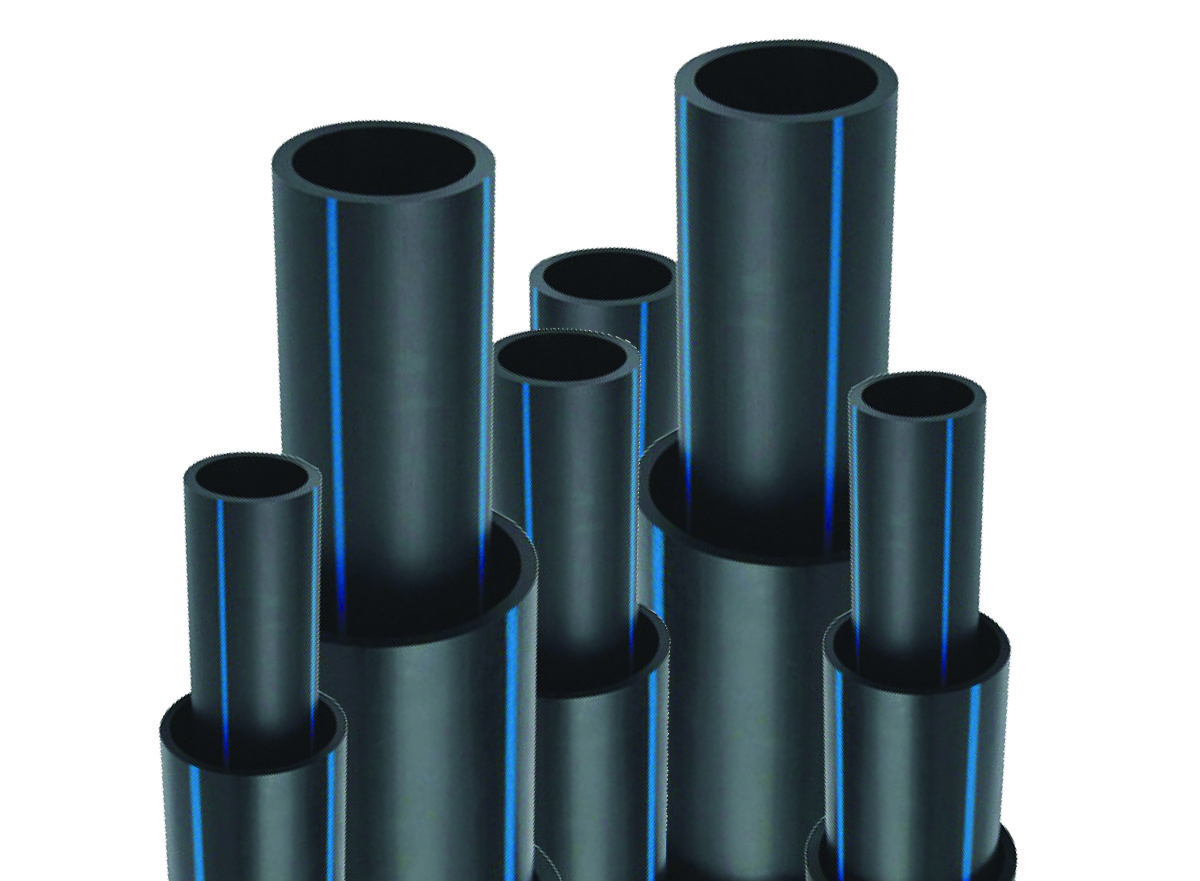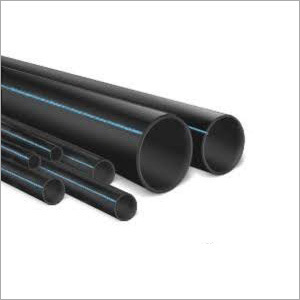hdpe pipe suppliers Midland TX: Things to Consider for Contractors
Wiki Article
Discover the Production Process Behind High-Quality HDPE Pipeline and Its Applications
The manufacturing procedure of premium HDPE pipelines is elaborate and systematic. It starts with the selection of raw materials that improve performance. Following this, ethylene undergoes polymerization to create material, which is after that shaped through extrusion. Quality control is vital, making certain that the final item satisfies rigid criteria. The journey of HDPE pipes does not finish with manufacturing. Their applications throughout various markets reveal a broader importance worth taking a look at.Comprehending HDPE: Characteristics and Advantages

High-density polyethylene (HDPE) is a functional polycarbonate known for its resilience and resistance to different ecological aspects. This product shows excellent tensile stamina, making it ideal for demanding applications. Its low-density framework adds to a light-weight product, helping with ease of handling and installment. HDPE additionally showcases exceptional resistance to chemicals, which minimizes destruction when subjected to harsh compounds.
The product's low wetness absorption additionally improves its longevity, making it perfect for usage in pipes and tank. Furthermore, HDPE is immune to ultraviolet (UV) radiation, making sure that items keep their integrity even when exposed to sunlight. In addition, its adaptability permits the development of complex shapes without compromising stamina. The environmentally friendly nature of HDPE, often acquired from recycled materials, includes in its appeal, promoting sustainable methods in production. On the whole, these buildings and advantages make HDPE a preferred selection for various commercial and consumer applications.
Resources Choice for HDPE Production
The selection of resources for HDPE production is vital to verify the end product satisfies the desired requirements and top quality requirements. High-density polyethylene (HDPE) is mostly generated from polymerized ethylene, acquired from nonrenewable fuel sources such as gas or crude oil. The high quality of these feedstocks considerably affects the mechanical and thermal properties of the last HDPE.Additives additionally play a substantial function in enhancing HDPE's performance, including antioxidants, UV stabilizers, and colorants, which enhance sturdiness and resistance to ecological factors. The option process have to take into consideration not just the chemical structure of the raw products however also their handling qualities to assure reliable production.
The sourcing of raw products ought to focus on sustainability and conformity with environmental regulations, as liable techniques are imperative in today's market. Ultimately, mindful raw product selection lays the structure for generating high-quality HDPE pipes suitable for diverse applications.
The Extrusion Refine: Forming HDPE Pipe
The extrusion process plays a vital duty fit HDPE pipelines, beginning with careful product prep work techniques that ensure perfect flow and uniformity. Equally vital is the style of the die, which straight influences the final dimensions and surface top quality of the pipe. With each other, these variables contribute greatly to the effectiveness and high quality of HDPE pipeline production.Product Preparation Strategies
Efficient production of HDPE pipelines begins with careful product preparation techniques, specifically the extrusion procedure. During this stage, high-density polyethylene material is initial dried to eliminate moisture, guaranteeing perfect circulation qualities. The material is after that fed right into the extruder, where it goes through home heating and melting, changing into a thick state. This heating process is carefully regulated to maintain the material's integrity and performance. The molten HDPE is forced with a die, shaping it right into a constant pipeline kind. Correct temperature monitoring throughout extrusion is vital, as it straight impacts the product's residential or commercial properties and the last product high quality. When formed, the HDPE pipeline is cooled and cut to defined sizes, prepared for subsequent handling and applications.Die Style Significance
Precision in die style plays an essential duty in the extrusion procedure of HDPE pipelines. The die acts as the last shaping device, straight influencing the pipeline's dimensions, wall surface density, and surface area finish. A properly designed die warranties uniform material flow, reducing problems such as irregularities and weak points. The geometry of the die must be maximized to accommodate the specific buildings of HDPE, including its thickness and thermal behavior throughout extrusion. Furthermore, the cooling rate of the material as it passes through the die can markedly impact the pipe's architectural stability. Consequently, purchasing innovative die technology is vital for producers aiming to generate high-quality HDPE pipes that fulfill sector criteria and consumer assumptions.Quality Control Measures in HDPE Manufacturing
Numerous factors influence the top quality of HDPE pipe manufacturing, reliable high quality control actions are critical to guarantee uniformity and integrity in the final item (hdpe pipe suppliers Midland TX). Trick quality assurance practices consist of strenuous product evaluation, confirming that the raw polyethylene fulfills well established standards for purity and thickness. Throughout the extrusion procedure, criteria such as temperature, pressure, and cooling time are very closely monitored to keep dimensional accuracy and structural integrityOn top of that, post-production screening is necessary; suppliers often perform hydrostatic examinations to evaluate the pipeline's toughness and resistance to pressure. Aesthetic inspections for surface problems better boost quality control. Qualification from relevant criteria companies, like ASTM or ISO, gives an additional layer of reliability. By executing these complete top quality control actions, manufacturers can lessen flaws, enhance performance, and make certain that the HDPE pipes meet the particular requirements of various applications, eventually leading to client satisfaction and trust in the product.
Applications of HDPE Pipeline Across Industries
HDPE pipelines are made use of throughout different sectors as a result of their durability and versatility. In water circulation systems, they guarantee reliable delivery, while in wastewater monitoring, they offer trustworthy remedies for waste transportation. In addition, farming irrigation networks gain from HDPE's resistance to deterioration and versatility, making it a suitable option for modern-day farming techniques.
Water Circulation Solutions
A significant number of sectors count on high-density polyethylene (HDPE) pipes for efficient water circulation systems. Known for their longevity and resistance to deterioration, HDPE pipelines are extensively utilized in local water supply networks, agricultural irrigation, and commercial applications. Their light-weight nature helps with very easy handling and installment, minimizing labor prices and time. In addition, HDPE pipelines can suit various pressure degrees, making them ideal for both reduced and high-pressure systems. Pipe Supplier American Plastics Midland. The adaptability of the material permits smooth combination right into existing infrastructure, minimizing the need for substantial excavation. HDPE's resistance to chemical leaching assurances that the water delivered continues to be secure and clean, making it a suitable selection for maintaining the high quality of drinkable water across various sectors.Wastewater Administration Solutions
Effective water circulation systems likewise lead the way for cutting-edge wastewater management options, where high-density polyethylene (HDPE) pipelines play a significant duty. Popular for their durability and resistance to rust, HDPE pipelines are excellent for moving wastewater in numerous settings. Their flexibility permits for easy setup in complex environments, minimizing the need for substantial excavation. In addition, HDPE's smooth indoor surface minimizes rubbing, enhancing circulation rates and performance. These pipes are additionally resistant to chemical leaching, making certain that impurities do not compromise the surrounding environment. Industries, municipalities, and therapy centers increasingly depend on HDPE pipelines for their reliability and longevity, making them a recommended choice for contemporary wastewater administration systems. This versatility highlights the important relevance of HDPE pipelines throughout numerous applications.Agricultural Watering Networks
Agricultural irrigation networks benefit significantly from using high-density polyethylene (HDPE) pipes, which provide effective and dependable water shipment to crops. HDPE pipelines are light-weight, making them simple to transfer and install, while their flexibility permits various setups in diverse surfaces. These pipelines show exceptional resistance to rust, chemicals, and UV radiation, guaranteeing longevity in harsh farming environments. Furthermore, their smooth indoor surface area decreases rubbing loss, maximizing water flow and lowering energy expenses related to pumping. The long life of HDPE pipelines, commonly exceeding half a century, adds to lower maintenance and replacement expenditures. Subsequently, farmers progressively rely upon HDPE pipes to boost watering performance and advertise sustainable agricultural methods, inevitably causing improved plant returns and resource conservation.Future Patterns in HDPE Pipeline Modern Technology
As the demand for lasting and efficient framework expands, innovations in HDPE pipeline innovation are positioned to transform numerous sectors. Arising patterns consist of the assimilation of clever technologies, such as sensors and IoT capabilities, which promote real-time tracking of pipeline problems, decreasing maintenance costs and stopping leaks. Furthermore, the growth of sophisticated manufacturing techniques, such as 3D printing, is allowing the manufacturing of facility, personalized pipeline styles that satisfy certain task requirements.Furthermore, the concentrate on recycling and round economic situation methods is driving the technology of HDPE pipes made from recycled products, enhancing sustainability. Improved jointing approaches, such as electro-fusion and mechanical installations, are also improving installment performance and integrity. Ultimately, the expanding focus on environmental laws is pressing producers to embrace greener production procedures, guaranteeing that HDPE pipes not just satisfy sector standards however likewise promote an even more sustainable future for framework advancement.
Regularly Asked Inquiries
Just How Does HDPE Compare to Various Other Plastic Materials?
HDPE exceeds several other plastic products regarding sturdiness, chemical resistance, and versatility. Its reduced thickness and high tensile stamina make it suitable for different applications, often surpassing alternatives in both performance and longevity.What Are the Ecological Influences of HDPE Production?
The ecological impacts of HDPE production include greenhouse gas discharges, energy consumption, and possible contamination from making processes. Additionally, inappropriate disposal can bring about soil and water contamination, raising worries about long-lasting ecological impacts.Can HDPE Pipeline Be Reused?
Yes, HDPE pipes can be reused. Numerous facilities accept made use of HDPE for processing, changing it into new items. This recycling contributes to sustainability efforts, reducing plastic waste while saving resources and energy in the manufacturing cycle.What Is the Life Expectancy of HDPE Pipeline?

Just How Do Temperature Level Variants Affect HDPE Pipeline Performance?
Temperature level variants greatly affect HDPE pipeline performance, affecting flexibility and toughness. High temperature levels can bring about softening, while reduced temperatures might trigger brittleness, ultimately influencing the pipe's toughness and viability for numerous applications in varied atmospheres.Report this wiki page